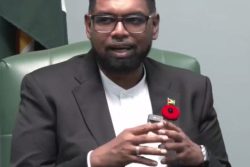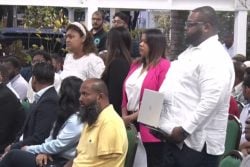Dear Editor,
This letter is mostly for Mr. Ally, who proudly stated he lives in Fort Lauderdale I assumed in the state of Florida, USA. For this reason, I couldn’t help but notice a peculiar phenomenon in the sunny paradise of Fort Lauderdale, one that would make even the architects of apartheid scratch their heads in admiration. I speak, of course, of the distinct geographical segregation between the white population and those of Guyanese heritage. But here’s the twist—could this be…self-imposed such as knowing your place?
Let’s take a look at the evidence. The white population, predictably enough, lounges in affluent coastal neighborhoods like Las Olas Isles and Rio Vista, where the average household income tops a cool $150,000 annually. It’s as if they’ve collectively agreed, “Let’s keep the scenic spots for ourselves, darling.” Meanwhile, the growing population of Guyanese heritage, with their vibrant Caribbean culture, has opted for neighborhoods like Lauderhill and Lauderdale Lakes, where the average household income is closer to $50,000—decidedly more suburban, working-class, and far from those breathtaking beachside vistas.
And what separates these two worlds? Why, only a few of Fort Lauderdale’s iconic highways and bridges. The well-heeled white residents enjoy easy access to Federal Highway (U.S. 1) and East Broward Boulevard, while the Guyanese community, settled in the western parts of the city, relies on State Road 7 (U.S. 441) and the Florida Turnpike to traverse their daily routes. Let’s not forget about I-95, the great urban divide that might as well be a cultural chasm, keeping the affluent on one side and the vibrant Caribbean life on the other. The famed 17th Street Causeway and Las Olas Boulevard bridges serve as the literal connectors to the beach and the waterways, but in practice, they feel like drawbridges lifted to maintain this pseudo-apartheid.
Could it be that Guyanese folks are too busy running successful small businesses, celebrating Phagwah, and enjoying some delicious pepperpot to bother crossing these symbolic barriers? Or perhaps, they simply prefer their own communities, filled with the sounds of chutney music rather than the hum of cocktail parties on yachts. While some may see this as another glaring example of economic disparity, I propose that this situation be viewed as a savvy real estate decision on the part of the Guyanese community. Why pay top dollar to be near the water when you can have more square footage in the suburbs—and a Guyanese bakery down the street? After all, who needs ocean breezes when you’ve got the spice of Caribbean culture?
So, before we label this as a form of apartheid, let’s pause to consider the possibility that maybe—just maybe—this is a clever, community-driven strategy of self-segregation. Why pay for beachfront property when you can make your own waves in Lauderhill?
Sincerely,
Keith Bernard





